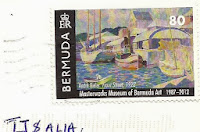Levadas, Madeira
Sent by Andrew Zino, the CEO of Laurislva of Madeira.
The Laurisilva of Madeira consists of approximately 15,000 ha within the 27,000 ha Madeira Nature Reserve. The site conserves primary laurel forest (laurisilva), a vegetation type that is now confined to the Azores, Madeira and the Canary Islands. The laurisilva on Madeira is the largest area of laurel forest surviving and is in very good condition, with around 90% believed to be primary forest.
Fossil evidence shows that laurisilva flora once covered much of southern Europe in the Tertiary era, 15-40 million years ago, and what is now seen in Madeira is the largest surviving relict of a virtually extinct flora of great interest. As climate change brought about its demise on continental Europe, the ocean-moderated climate of the island groups of the Azores, Madeira and Canary Islands maintained relicts of this previously widespread forest type.
The laurel forest has great ecological value, playing an important role in maintaining the ecological balance of the island. It provides ecological services to the island by protecting the micro-climate and maintaining water supplies by collecting and retaining water. The forest completely covers a series of very steep, V-shaped valleys leading from the plateau and east-west ridge in the centre of the island to the north coast. Ancient trees in the valley bottoms, waterfalls and cliffs provide spectacular scenery. At the higher altitudes, arborescent plants in normally herbaceous genera such as sow-thistle cling to steep cliffs and in the valley bottom giant ferns abound.
The laurisilva of Madeira is notable for its biological diversity with at least 66 vascular plant species endemic to Madeira occurring in the site.
13 liverwort species and 20 moss species are listed as rare or threatened on a European scale; and endemic animals include a species of pigeon (Madeiran long-toed pigeon, which eats the laurel fruits); a lizard species; two species of bat; and endemic subspecies of chaffinch and fire-crest. (Source)



















